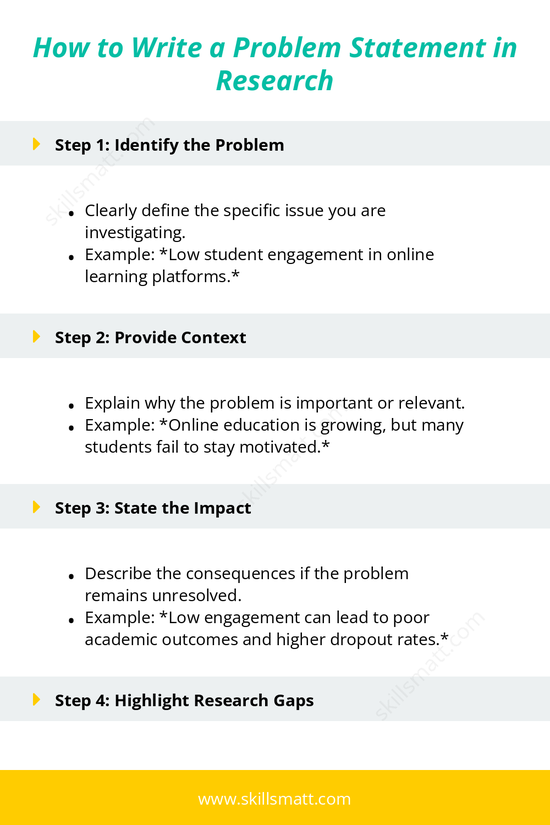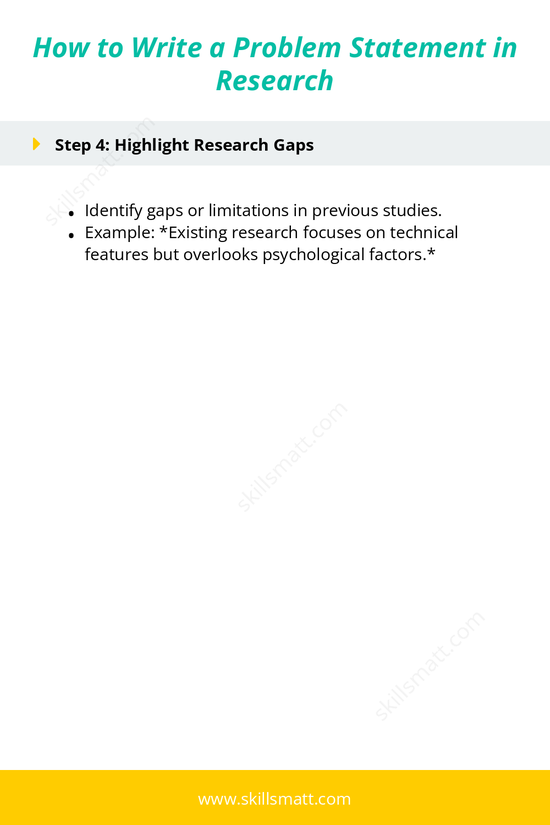How to Write a Problem Statement in Research
Writing a clear and concise problem statement is essential to set the stage for your research. Follow these steps to craft an effective problem statement:
Step 1: Identify the Problem
- Clearly define the specific issue you are investigating.
- Example: *Low student engagement in online learning platforms.*
Step 2: Provide Context
- Explain why the problem is important or relevant.
- Example: *Online education is growing, but many students fail to stay motivated.*
Step 3: State the Impact
- Describe the consequences if the problem remains unresolved.
- Example: *Low engagement can lead to poor academic outcomes and higher dropout rates.*
Step 4: Highlight Research Gaps
- Identify gaps or limitations in previous studies.
- Example: *Existing research focuses on technical features but overlooks psychological factors.*
Step 5: Formulate a Research Question
- Craft a clear and concise question your study will address.
- Example: *What strategies can improve student motivation in online learning environments?*
Step 6: Tailor to Your Audience
- Ensure the problem statement resonates with your target readers.
- Adapt the tone and detail based on whether your audience is academic, professional, or general.
Step 7: Revise and Refine
- Check for clarity, coherence, and conciseness.
- Seek feedback and iterate to perfect your statement.
By following these steps, you’ll create a problem statement that sets a solid foundation for your research.


